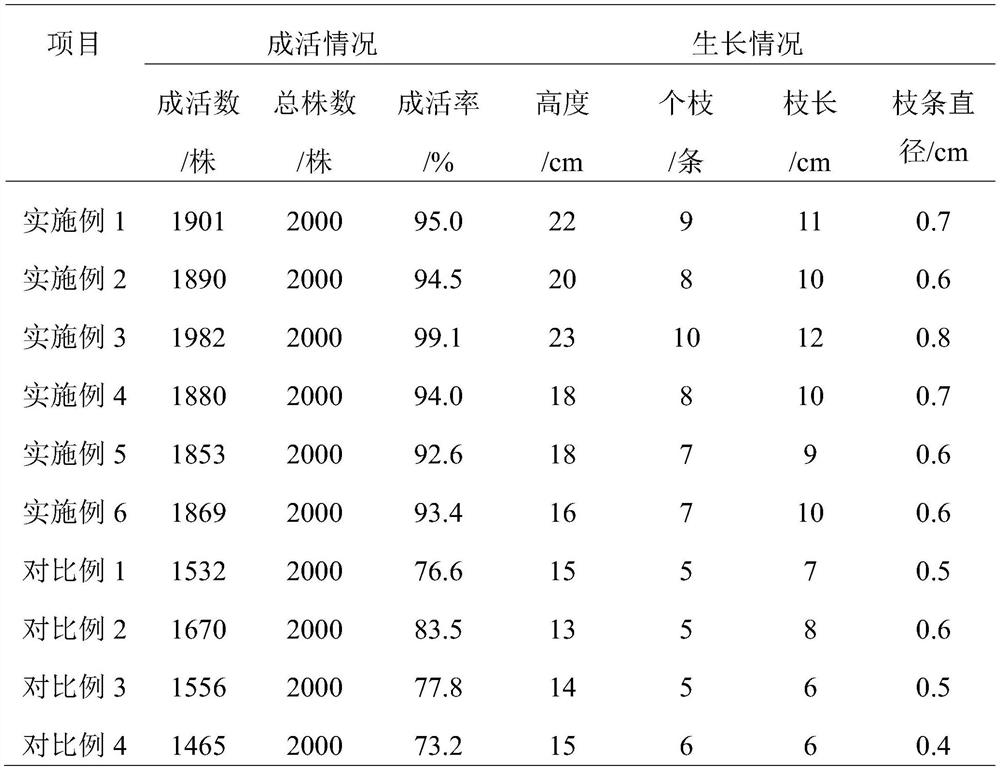A kind of cultivation method of safflower loropetalum
A cultivation method, the technology of safflower loropetalum, applied in cultivation, soilless cultivation, fertilization methods, etc., can solve problems such as inability to reflect economic value and ecological value, poor ornamental effect, low survival rate, etc., and achieve economic value improvement and ecological value, increase the survival rate, and the effect of high survival rate
- Summary
- Abstract
- Description
- Claims
- Application Information
AI Technical Summary
Problems solved by technology
Method used
Image
Examples
Embodiment 1
[0018] The cultivation method of safflower loropetalum, comprises the following steps:
[0019] S1, soil selection: select loose and deep soil, metamorphic rock old strata primary soil with a pH value of 5.0 to 7.5; organic matter content 68%, wherein organic matter includes: carbohydrate 18%, lignin 28%, available potassium 12% , available phosphorus 5%;
[0020] S2. Cultivation substrate: add 3% of its weight EM bacterial liquid to the inside of the seedling cultivation substrate, leave it to stand for 13 hours at room temperature at 25° C. with a moisture content of 55%, and leave it to stand for 3 hours after warming up to 38° C. to obtain the cultivation substrate. The seedling cultivation substrate consists of Composed of peat soil, coir peat, triethanolamine and olivine with a mass ratio of 30:12:11:10;
[0021] S3, seed cuttings: pour the cultivation medium into the inside of the cuboid capacity box, place the seed cuttings inside the cultivation substrate, and place ...
Embodiment 2
[0024] The cultivation method of safflower loropetalum, comprises the following steps:
[0025] S1, soil selection: select the original soil of the metamorphic rock old formation with loose and deep soil and a pH value of 7.5; the organic matter content is 75%, wherein the organic matter includes: carbohydrate 31%, lignin 35%, available potassium 29%, effective Phosphorus 10%;
[0026] S2. Cultivation substrate: add 5% of its weight EM bacterial liquid to the inside of the seedling-raising substrate, let it stand for 20 hours at a normal temperature of 25° C. and a water content of 60%, and then stand still for 5 hours after warming up to 55° C. to obtain the cultivation substrate. The seedling-raising substrate consists of It is composed of peat soil, coir peat, triethanolamine and olivine with a mass ratio of 63:28:36:25;
[0027] S3, seed cuttings: pour the cultivation medium into the inside of the cuboid capacity box, place the seed cuttings inside the cultivation substra...
Embodiment 3
[0030] The cultivation method of safflower loropetalum, comprises the following steps:
[0031] S1, soil selection: select the original soil of the metamorphic rock old formation with loose and deep soil and a pH value of 6; the organic matter content is 70%, wherein the organic matter includes: carbohydrate 20%, lignin 32%, available potassium 20%, effective Phosphorus 8%;
[0032] S2. Cultivation substrate: add 4% of its weight EM bacteria liquid to the inside of the seedling cultivation substrate, leave it to stand for 16 hours at room temperature at 25° C., with a moisture content of 58%, and let it stand for 4 hours after warming up to 45° C. to obtain the cultivation substrate. The seedling cultivation substrate consists of Composed of peat soil, coir peat, triethanolamine and olivine with a mass ratio of 45:20:19:18;
[0033] S3, seed cuttings: pour the cultivation medium into the inside of the cuboid capacity box, place the seed cuttings inside the cultivation substra...
PUM
| Property | Measurement | Unit |
|---|---|---|
| Height | aaaaa | aaaaa |
| Diameter | aaaaa | aaaaa |
Abstract
Description
Claims
Application Information
 Login to View More
Login to View More - R&D
- Intellectual Property
- Life Sciences
- Materials
- Tech Scout
- Unparalleled Data Quality
- Higher Quality Content
- 60% Fewer Hallucinations
Browse by: Latest US Patents, China's latest patents, Technical Efficacy Thesaurus, Application Domain, Technology Topic, Popular Technical Reports.
© 2025 PatSnap. All rights reserved.Legal|Privacy policy|Modern Slavery Act Transparency Statement|Sitemap|About US| Contact US: help@patsnap.com

